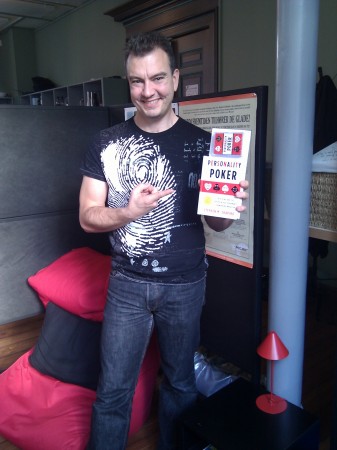What does it say about me that out of the (literally) hundreds of business books I’ve read, two of my all-time favorites have the word “ass” in the title?
Do I just have a juvenile sense of humor? Do I tend to enjoy profanity? Do I like it when people are brave enough to stick out from the crowd? Guilty on all counts!
Almost 20 years ago Stanford professor Bob Sutton wrote “The No Asshole Rule” and in March Garry Ridge’s new book “Any Dumbass Can Do It” is coming out and I was lucky enough to get to read an advance copy.
In some ways these two books are polar opposites. The No Asshole rule looks at bad management from a research-based perspective and reveals all the ways toxic bosses hurt us and gives tips on how to deal with them.
“Any Dumbass Can Do It” on the other hand is a practical real-life guide to how to be a good leader from a man who has done it himself for decades with spectacular results.
Garry was CEO and president of WD-40 Company for over 25 years, and is also an adjunct professor at the University of San Diego, where he teaches the principles and practices of corporate culture in the Master of Science in Executive Leadership program.
I probably don’t need to talk too much about the company. I’m willing to bet that somewhere in your home there is a blue and yellow can of WD-40 – I know exactly where mine is! But with Garry at the helm it grew to a multibillion-dollar company while maintaining a culture where 97% of employees say they love to work.
I have a special insight when reviewing this book because I have seen the results first hand. Garry and I first met 20 years ago and have since then spoken at the same events many times. I invited him to speak at one of my conferences and he brought me in to present to his leadership class. I also got to tour the WD-40 facilities and see for myself all of the amazing initiatives that build and sustain their culture.

Watch Garry’s amazing speech at my conference.
When you read “Any Dumbass Can Do It” (and you absolutely should) you will get access to so many of Garry’s ideas and tools that you can apply in your own leadership. He has been there and generously shares exactly how you can do it for yourself. You’ll get ideas both for building a better culture in your own organization and for how to connect better to your customers’ needs and build an inspiring external brand.
All of these ideas are gold but for me, the deepest value of this book comes from its most foundational message: That we are all just here in this world to make each other happy and if we can build a business based on that, then employees will be happier and the company will be much more successful.
It’s a rare business book that explicitly uses the H-word (Happy) but in this book it shines through every page. The book is also highly readable and at times hilarious, which only makes me like it even more.
The management guru Warren Bennis once said this:
The most dangerous leadership myth is that leaders are born – that there is a genetic factor to leadership. This myth asserts that people simply either have certain charismatic qualities or not.
That’s nonsense; in fact, the opposite is true. Leaders are made rather than born.
I could not agree more. Any leader willing to put in the effort can turn their organization into a happy and successful culture. And using all the many many fantastic tips in Garry’s book means that even a dumbass can do it.
The book comes out in March 2025 and you can preorder it here.








 There are some companies that seem completely unafraid to do things differently. While others cling desperately to business as usual, I admire organizations who try alternative ideas and Zappos is one of these companies. For those outside of the US who have not yet heard of Zappos, they sell shoes and clothes online and they do so with huge success: Their sales for 2009 was $1 billion. That’s a lot of shoes and for a company that’s only 10 years old, that’s nice going.
There are some companies that seem completely unafraid to do things differently. While others cling desperately to business as usual, I admire organizations who try alternative ideas and Zappos is one of these companies. For those outside of the US who have not yet heard of Zappos, they sell shoes and clothes online and they do so with huge success: Their sales for 2009 was $1 billion. That’s a lot of shoes and for a company that’s only 10 years old, that’s nice going.